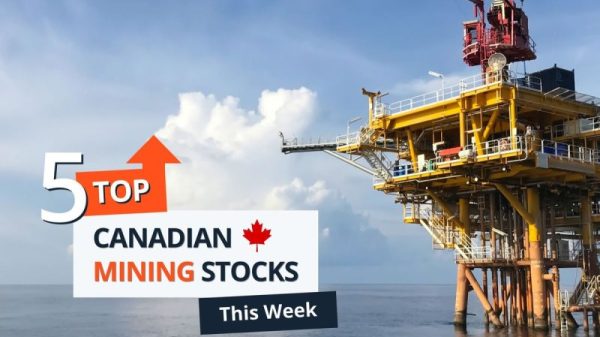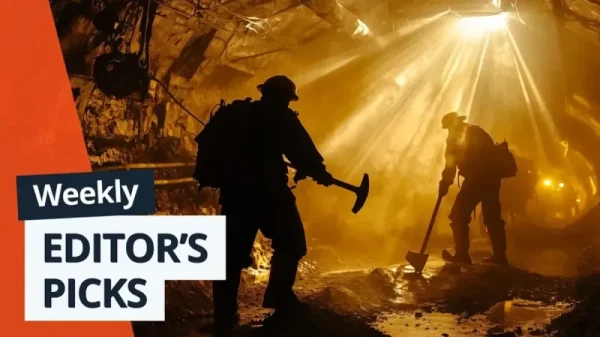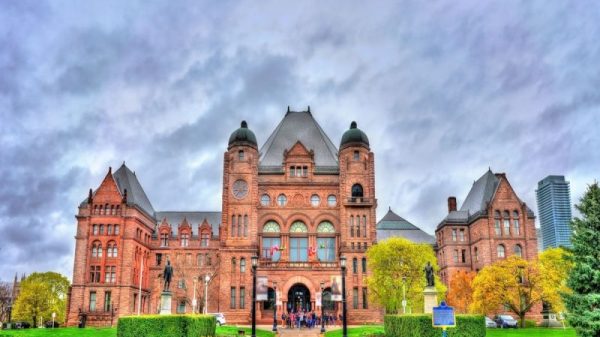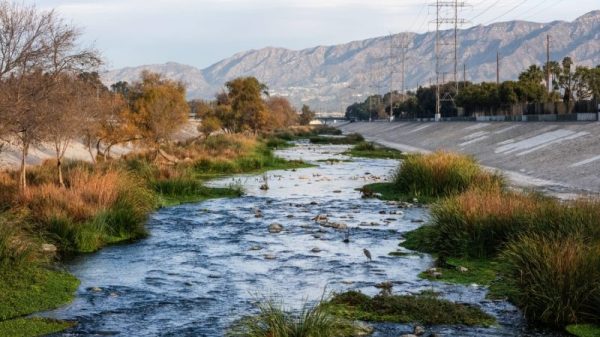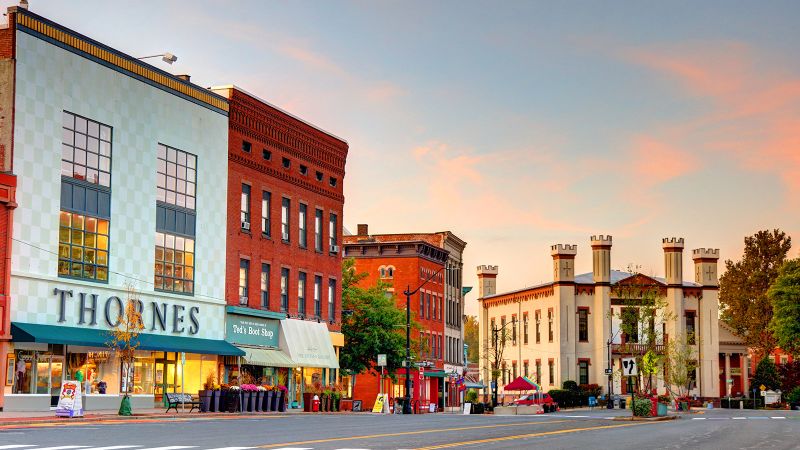Disney World, Times Square and Yellowstone National Park can be packed to the rafters with tourists. But there are plenty of other places across the United States that continue to fly beneath the travel radar.
While there are literally hundreds of locations that fit that description, here are 25 destinations – from cities and national parks to regions and even entire states – that remain refreshingly underrated despite the surge in travel this year.
They’re listed geographically from the Northeast to the Pacific:
Pioneer Valley, Massachusetts
Far western Massachusetts boasts the Berkshires while the state’s eastern end is anchored by Boston and Cape Cod. So what’s in the middle? A Pioneer Valley carved by the Connecticut River and several vintage mill cities that have reinvented themselves in modern times.
The Naismith Memorial Basketball Hall of Fame in Springfield is where the sport was born in 1891 as a rainy-day indoor activity, while the city’s Amazing World of Dr. Seuss Museum & Sculpture Garden celebrates the Springfield-born children’s author.
One-off shops, restaurants and the LGBTQ scene make Northampton worth a visit, or hop across the Connecticut River and hike a portion of the New England Trail through the north woods.
Block Island, Rhode Island
Unlike the other big isles off southern New England, this offshore slice of the Ocean State has gone the extra mile to preserve its natural environment. In fact, the Nature Conservancy declared the petite isle one of a dozen “Last Great Places” in the western hemisphere.
Wildlife refuges and other nature areas protect 40% of Block Island, and residents are renowned for their fierce opposition to anything that might imperil their pristine Atlantic home.
Beaches, biking and trekking 32 miles of coastal and inland trails are the main daytime activities. After dark, the island boasts a surprisingly good food scene and laid-back bars like Captain Nick’s, Yellow Kittens and the Poor People’s Pub.
Buffalo, New York
Once a boomtown at the confluence of the Great Lakes and Erie Canal, Buffalo snoozed through much of the 20th century. As the Upstate New York metropolis slowly awakens again, people have come to realize that all that downtime helped preserve the city’s classic architecture.
Among Buffalo’s stylish structures are the Art Deco City Hall, Greek Revival Buffalo History Museum, Victorian glass houses at the botanical gardens, and Frank Lloyd Wright’s streamlined Martin House.
A renaissance of the city’s once derelict waterfront includes the Canalside shopping and entertainment district, lakeside hiking and biking trails, a naval maritime museum, and Silo City with its iconic grain elevators. Meanwhile, Niagara Falls is just up the road.
Pennsylvania Wilds
From abundant wildlife and untamed mountain streams to the old growth trees of the Forest Cathedral and Pine Creek’s gaping Mid-Atlantic version of the grand canyon, there’s still plenty of wild in north-central Pennsylvania.
One of the least populated places east of the Mississippi River, the Wilds sprawl across a vast expanse of the rugged Allegheny Plateau. In addition to Allegheny National Forest, the region harbors 29 state parks, two national wild and scenic rivers, and a world-class stargazing center at Cherry Springs, as well as human relics like the Kinzua Bridge (dubbed the “8th Wonder of the World” when it opened in 1882).
West Virginia
While West Virginia may not be “almost heaven” for everyone, it certainly is for history buffs and outdoor enthusiasts.
Harpers Ferry witnessed John Brown’s infamous 1859 raid that helped ignite the Civil War. Three years later, Robert E. Lee and Stonewall Jackson led a successful Confederate attack on the strategic Union-held town. The riverside town is also a jumping off point for the Appalachian Trail and the Chesapeake & Ohio Canal Towpath.
Established in late 2020 as the nation’s newest national park, New River Gorge is renowned for whitewater sports, hiking and mountain biking, and Bridge Day BASE jumping from the humongous New River Gorge Bridge.
Durham, North Carolina
Few American cities have experienced a more dramatic turnaround over the past 15 years. From its days as a tobacco factory town, Durham has evolved into a science, art, sports and entertainment hub that revolves around a reenergized downtown and reimagined American Tobacco Campus.
The Durham Bulls – the nation’s most famous minor league baseball team – play their often-sold-out games at a spiffy little downtown stadium. At the Duke Lemur Center, visitors can walk through giant forest habitats helping to preserve some of the planet’s rarest mammals. Meanwhile, the city’s craft brewery and distillery scene is outta sight.
Cumberland Island National Seashore, Georgia
Georgia’s largest barrier island blends beach fun and outdoor adventure with copious wildlife and famous American families.
Although most visitors only come to Cumberland for the day – via their own boats or ferry from St. Marys on the mainland – you can also overnight at beachside campgrounds or the elegant Greyfield Inn, built in 1900 and still owned and operated by the Carnegie clan of steel renown.
Wild horses romp and sea turtles lay their eggs along the island’s 18-mile-long beach, while alligators patrol the wetlands along Cumberland Sound. JFK Jr. and Carolyn Bessette were married at the First African Baptist Church at Northend, a historic Africa American community founded by freed slaves.
Florida’s Forgotten Coast
Arrayed along the Gulf of Mexico between Port St. Joe and St. Marks, this unheralded slice of the Florida shore is about as authentic as it gets in the Sunshine State.
Talcum-powder-fine beaches on the St. Joseph Peninsula and St. George Island offer an uncrowded alternative to Florida’s more storied (and crowded) strands. Manatees and monarch butterflies are among the wildlife denizens of Wakulla Springs and St. Marks National Wildlife Refuge.
Fresh-off-the-boat shellfish and live music are the twin attractions of the St. Mark’s Stone Crab Festival (October) and Florida Seafood Festival in Apalachicola (November).
Western Tennessee
Bordering the Mississippi River, the western end of the Volunteer State presents an enticing blend of nature, history, music and food.
Beale Street in Memphis is best known for the blues, but the city was also the cradle of soul and rock ‘n’ roll and one of the best places on the planet to catch live tunes today. The Stax Museum of American Soul Music, Elvis Presley’s Graceland and Sun Studio are all here, and the National Civil Rights Museum at the Lorraine Motel is a can’t-miss historic site.
Tangy, spicy and sweet, Memphis pork barbecue is served in more than 100 barbecue joints. If that’s not your culinary jam, the city is also flush with awesome soul food and Delta-style fish restaurants.
Western Tennessee’s role in the Civil War is the focus of Shiloh National Military Park and Fort Donelson National Battlefield, clashes that helped elevate little-known general Ulysses S. Grant to national fame.
Meeman-Shelby Forest State Park conserves nearly 13,000 acres of rare hardwood bottomland along the Mississippi River, including eerie bald cypress swamp. In addition to boating, hiking and camping, the park is an Audubon “Important Bird Area.”
Ouachita Mountains, Arkansas
Tucked into a valley on the southeast edge of the Ouachita range, Hot Springs National Park has been popular since the 1830s when the first bathhouses appeared. But few visitors make it much farther into the highlands of west-central Arkansas.
Unlike the nearby Ozarks, which boast manmade ways to sample nature and culture, the Ouachitas are exceedingly untouristy. That makes these mountains ideal for those who like their hiking, camping and fishing with a large dose of solitude.
Magazine Mountain (the state’s highest point) is a regional hang-gliding mecca and the area also boasts gnarly mountain biking routes.
Kansas City, Missouri
Missouri’s second largest city is all about sound and flavor. A cradle of American jazz, KC boasts more than 40 venues where you can listen to live jazz, blues and other tunes and probably as many joints offering savory, slow-smoked Kansas City barbecue.
Catch a Royals game at Kauffman Stadium, compare Van Gogh and Warhol at the world-class Nelson-Atkins Museum of Art, delve into history at the National World War I Museum & Memorial, the frontier-era Arabia Steamboat exhibition, or take a stroll down memory lane at Country Club Plaza (opened in 1922 as the nation’s first suburban shopping center).
Southern Illinois
Wedged between the Ohio and Mississippi rivers, the state’s southern tip still looks and feels a lot like Illinois did in the early 1800s when the infamous Trail of Tears passed this way and a youthful Abraham Lincoln was still splitting rails.
Hikers can explore the dark woods and deep canyons of Shawnee National Forest – and maybe have a Sasquatch sighting – on the 160-mile River to River Trail. Shorter hikes penetrate the primeval rocky outcrops of Giant City and Garden of the Gods.
Among the region’s manmade attractions are the Superman Museum and colossal statue in Metropolis, the Cave-in-Rock free ferry across the Ohio River, and the Full Terror Assault heavy metal music festival in September.
Lake Superior
The American half of the world’s largest freshwater lake (by surface area) stretches across northern Michigan, Wisconsin and Minnesota, a vast expanse of water, trees, islands and wildlife that rivals anything out west.
Bookended by Duluth, Minnesota, and Sault Ste. Marie, Michigan, the Lake Superior region embraces Pictured Rocks and Apostle Islands national lakeshores, Isle Royale National Park with its resident wolves, moose and other creatures, and the winter sports slopes of Porcupine Mountains Wilderness State Park.
Anglers can cast for 86 fish species that inhabit the lake, while divers have scores of historic shipwrecks to explore. For those who just want to glide through, half a dozen major cruise lines include Superior in their Great Lakes itineraries.
Oklahoma
A state that many people fly over and drive right through, Oklahoma is one of those underrated places you should visit sooner rather than later.
Oklahoma City flaunts a surprisingly rich and varied food scene, especially the eclectic Paseo, Plaza and Uptown 23rd neighborhoods and the Asian district.
The National Cowboy & Western Heritage Museum and Oklahoma City National Memorial are both must-see spots. For the outdoor inclined, Riversport OKC offers whitewater rafting, tubing, ziplines and sky trails in the city center.
Oklahoma’s long stretch of Historic Route 66 is strewn with old-fashioned diners, museums and roadside oddities. Tulsa showcases local hero Woody Guthrie, the new Bob Dylan Center and classic Art Deco architecture, while Medicine Park village and the nearby Wichita Mountains offer a taste of Wild West days.
Badlands of North Dakota
South Dakota’s badlands are better known (especially since they “starred” in the Oscar-winning movie “Nomadland”). But the badlands of neighboring North Dakota were more consequential for American history.
That’s where young Teddy Roosevelt ranched and lived the cowboy lifestyle in the 1880s, a period that influenced his conservation ethos and tough-as-nails presidential aura.
America’s 26th president also inspired the region’s Theodore Roosevelt National Park, which safeguards his modest log cabin and a pristine slice of the northern mixed grass prairie and many of the species Roosevelt would have encountered, including bison, prairie dogs and wild horses.
Gateway to the park, Medora offers its own Wild West relics such as Chateau de Mores, the North Dakota Cowboy Hall of Fame, the Maah Daah Hey Trail and a summertime outdoor musical inspired by Roosevelt’s badlands days.
North Park, Colorado
Thanks to the irreverent TV show, just about everyone’s heard of South Park. But did you know that there’s a North Park in Colorado?
Located around a three-hour drive northwest of Denver, the broad highland valley lies between the snowcapped peaks of the Medicine Bow Mountains and Park Range in one of the state’s least populated corners.
The Continental Divide Trail wraps around two sides of North Park while the valley’s waterways provide a pristine habitat for trout, migratory birds and lots of moose.
White Sands National Park, New Mexico
Like something created for a sci-fi movie rather than a quirk of nature, White Sands feels like visiting an alien planet. That’s how strange it is to explore the world’s largest gypsum dune field.
Visitors can hike across or sled down the bright-white dunes. If you didn’t pack your own toboggan, the visitor center gift shop sells/rents plastic discs. Overnight backpack camping is available along a sandy wilderness trail.
Flagstaff, Arizona
Even though it’s Arizona’s third-largest metro area, Flagstaff tends to be a place that travelers pass through on their way to the Grand Canyon or Sedona or following Route 66. But it definitely deserves a look-see.
During the school year, the 28,000 students of Northern Arizona University fill the city with a youthful energy that infuses the restaurants and bars of the historic downtown district.
Come summer, Flagstaff’s lofty altitude (6,900 feet) brings much cooler temperatures than the rest of Arizona and almost ideal weather for hiking the nearby San Francisco Peaks and Coconino National Forest. The elevation also brings winter snow and awesome skiing and snowboarding at Arizona Snowbowl.
The city’s Lowell Observatory offers a variety of family friendly astronomy programs. Just a short drive from Flagstaff is Bearizona wildlife park, Meteor Crater and three national monuments — Sunset Crater Volcano, Walnut Canyon and Wupatki.
West Texas
In frontier days, Texas west of the Pecos River was the epitome of the Wild West. An image that was later bolstered by classic movies like “The Searchers,” “Giant” and “No Country For Old Men.”
The vast region is still sparsely populated, home to wide open spaces and a couple of the nation’s wildest national parks: Big Bend and Guadalupe Mountains. Terlingua ghost town hosts a huge annual chili cookoff, Fort Davis preserves a historic US Cavalry post, while Marfa offers Hollywood history, offbeat art and the mysterious “Marfa Lights” of UFO lore.
Grand Staircase-Escalante National Monument, Utah
The largest national monument in the Lower 48 states, Grand Staircase-Escalante (GSE) sprawls across almost 1.9 million acres of largely roadless wilderness in south-central Utah.
The park takes its name from the remote Escalante Canyons and a sequence of huge plateaus that descend like a giant staircase between Bryce Canyon and Zion. Supervised by the Bureau of Land Management, GSE offers plenty of scope for wilderness hiking, camping and mounting biking.
In addition to primitive camping, Grand Staircase-Escalante also boasts upscale glamping spots like Yonder Escalante near the Escalante Interagency Visitor Center in the town of Escalante, and Under Canvas near Lake Powell.
Tacoma, Washington
Seattle may get the lion’s share of ink (and visitors), but Tacoma can hold its own when it comes to outstanding attractions thanks to the incredible glass art of native son Dale Chihuly, one of the nation’s best classic car collections and outstanding seafood.
The great outdoors also beckons: Tacoma is closer than Seattle to Mount Rainier and Olympic national parks, as well as awesome cold-water scuba diving in the Hood Canal.
Channel Islands National Park, California
A throwback to old California, the five-island park preserves paleolithic digs, frontier-era ranches and relics of Spanish exploration.
But its forte is raw nature. Whales, dolphins, sea lions and sea otters frolic in the waters around the park, while the islands provide a terrestrial habitat for super-rare flora and fauna species like the Torrey Pine and Island Fox.
Only around 30,000 people set foot on the islands each year. For those who make the ferry crossing from Ventura Harbor, there’s scuba diving, kayaking, hiking and backpacking – often in total solitude.
San Luis Obispo, California
Poised halfway between Los Angeles and San Francisco on California’s scenic Highway 101, San Luis Obispo has only recently emerged as a bona fide tourism destination.
Two factors were responsible for the turnaround: the evolution of world-class wine regions in nearby Paso Robles and the Santa Ynez Valley, and the transformation of downtown SLO into a lively social and shopping hub for the 22,000 students at Cal Poly SLO university.
Craft breweries, reasonably priced restaurants and one-off boutiques are all the rage in a city that also offers a historic Spanish mission, Coastal Range hiking and biking, and the seaside at Morro Bay and Avila Beach within a short drive.
Kaʻū District, Hawaii
Likely the first place that Polynesians stepped ashore in the Hawaiian Islands more than 1,000 years ago, Kaʻū is the southern end of the big Island of Hawaii.
Virtually untouched by modern tourism, the district is celebrated for its dramatic black and green sand beaches, tropical fruit and coffee farms and popular Punalu’u Bake Shop.
Hikers and mountain bikers can explore the remote Kahuku Unit or Ka’u Desert in Hawaii Volcanoes National Park, while Kealakekua Bay offers awesome kayaking, snorkeling and Hawaiian history at the district’s northwest corner.
Matanuska Valley, Alaska
Just an hour’s drive from Anchorage, this long river valley offers the sort of outdoor encounters that usually require a lot more time and effort to reach.
MICA Guides in Chickaloon features a full range of frozen adventures – including ice climbing and overnight camping on a glacier – while Alaska Helicopter Tours at Knik River Lodge offers fly-in glacier hiking, glacier lake paddleboarding and cross-glacier dogsledding.
Get up close and personal with furry Arctic beasts at the valley’s Musk Ox Farm and learn about the lives of frontier-era gold miners and their families at Independence ghost town.

